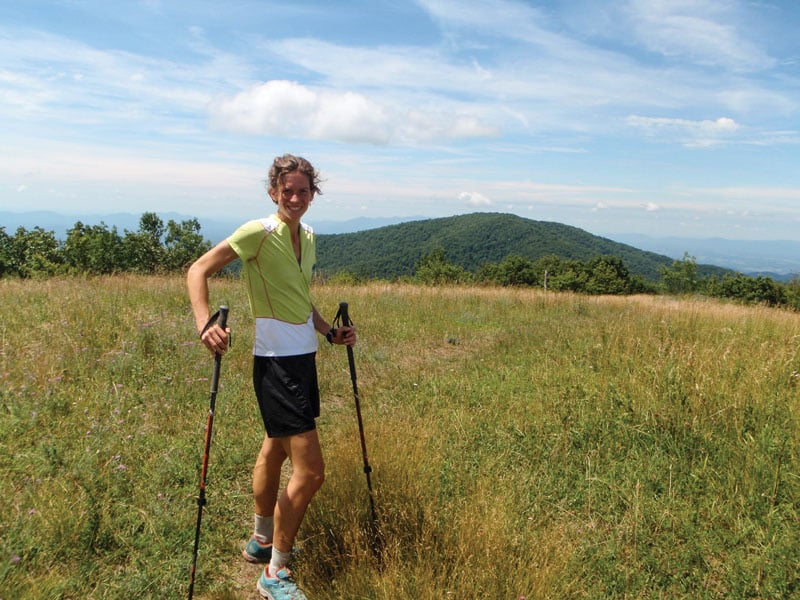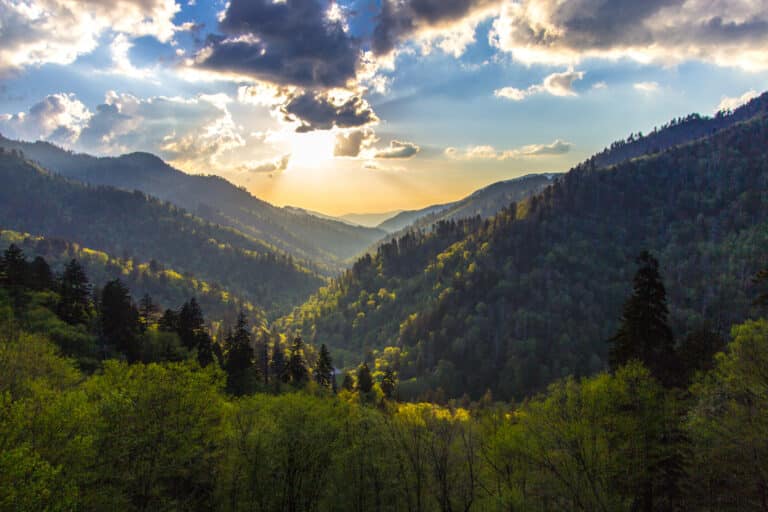When I phone 34-year-old speed-hiking guru Jennifer Pharr Davis, she is working on a book deadline two-years-in-the-making and has exactly four days to round out final edits. Meanwhile, she’s supposed to be prepping for her latest thru-hike—this time, it’s the Mountains to Sea Trail, a 1,175-mile route that begins at Clingmans Dome in the Smoky Mountains and terminates at Jockey’s Ridge State Park on the Outer Banks, and effectively bisects the state of North Carolina.
FOLLOW ALONG WITH JPD’S MST HIKE HERE!
It’s midday and, from the sound of things, it’s lunchtime. There’s the clink of glass bottles, a closing refrigerator, plastic sliding across a countertop, cabinets opening and closing, plates clanking, and, yes, children crying.
Apologizing for the commotion and his two screaming kids, her husband Brew sighs: “It’s a busy time for us; to say things are hectic would be a ridiculous understatement.”
After six years, two babies, a knee surgery, and six months worth of rehabilitative therapy, this will be the first hike of more than 100 miles Jennifer has taken since her record-breaking thru-hike of the Appalachian Trail in 2011. Slated to drive the MST route with kids in tow, Brew says he’s excited about hitting sections of the trail and checking out nearby breweries and sights, he’s stoked to be supporting his wife.
“Momma needs a hike,” Jennifer says with a laugh. “For me, the act of putting one foot in front of the other has changed my values, my outlook, and the very fiber of my being. It’s always been an affirming source of inspiration and transformation, and I’m presently long overdue.”
Along the way, Davis says she’ll be making edits on a book about endurance and hiking records that’s due out next spring, running a business from afar, and advocating for outdoor recreation, conservation and unity. Seeking to raise awareness and funds for the Mountains to Sea Trail, Brew will be coordinating events inviting hikers to join Jennifer on the trail, attend talks, and more. But just now, they’ve got a deadline and nearly 1,200 miles worth of packing to attend to.
Such is the life of a professional hiker. In the midst of one adventure, they’re persistently stepping into the next.
Part-Time Hobby to Full-Time Occupation
How do pro-hikers turn a beloved hobby into a full-time gig? While routes are about as varied as the trail is long, most agree it takes four things: Passion. Perseverance. Business sense. And hard work. However, unlike most traditional business endeavors, hikers tend to describe the road as a kind of happy accident that snow-balled.
“I started long-distance backpacking in 2002 when I thru-hiked the A.T. for the first time,” says pro-hiker Andrew Skurka. “I was in college at the time and an effort on that scale seemed like an experience that was worth having. While I loved the idea, I certainly wasn’t thinking this would become my occupation.”
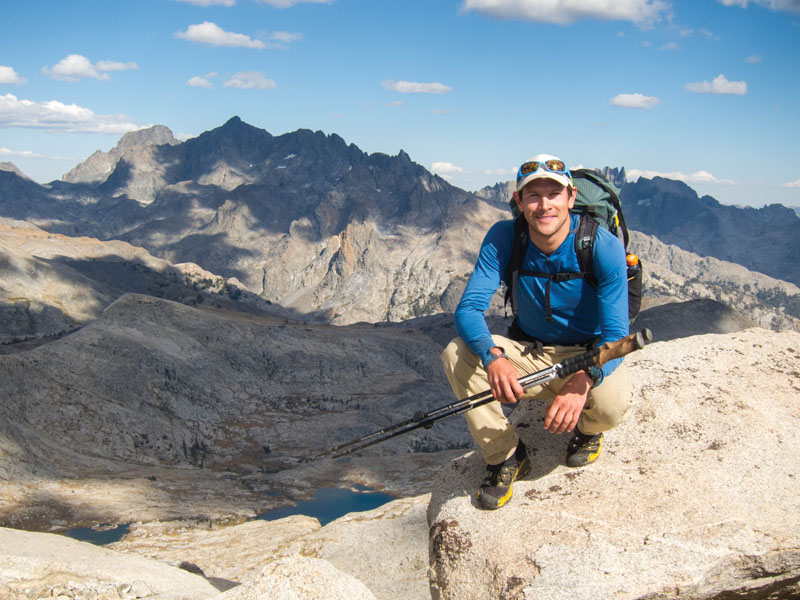
And yet, since then, the 36-year-old has backpacked, skied and pack-rafted more than 33,000 miles—the equivalency of traveling 1.2 times around the equator—and has become one of the world’s quintessential outdoorsmen.
[nextpage title=”Read on!”]
Mostly, he’s known for three monstrous hiking feats. In 2005, Skurka was the first to hike the Sea-to-Sea trail, which begins in Quebec and ends in Washington, and covers 7,778 miles (around 1,800 of which Skurka walked in snowshoes). Two years later, he completed the Great Western Loop, a 6,875-mile footpath that links the Pacific Crest, Pacific Northwest, Continental Divide, Grand Enchantment, and Arizona trails, and includes a wild segment passing through the Sonoran and Mojave Deserts. In 2010, Skurka hiked, skied and rafted his way to a 4,679-mile circumnavigation of Alaskan and Yukon wildernesses.
Combined, the efforts netted him huge accolades and, in so far as it’s possible for a hiker, mainstream renown. Beyond being featured in nearly every major news outlet in the country, Backpacker named him their 2005 “Person of the Year,” while National Geographic crowned him the “Adventurer of the Year” for 2007.
Be that as it may, Skurka says the success wasn’t premeditated. “Despite having much more to gain from a successful finish, my motivations for taking on those expeditions were very similar to those that drove my first thru-hike,” he says. “Simply put, I believed the experiences were worth the effort.” He’d see amazing landscapes few have laid eyes on. Meet adventurous characters. And challenge himself to conquer ambitious goals day after day, for months on end. “I wanted to push myself far outside my comfort zone, which is when personal growth really starts to happen,” he explains. “None of these trips could have been justified on the premise that they would somehow result in fame and fortune.”
In other words, it had to be about passion; it had to be about Skurka. “With the Alaska trip, I started out in 25-degree-below-zero weather, skied the first 1,200 miles, and encountered grizzly bears almost daily,” he says. “I was off-trail for 2,100 miles and passed through areas no one has traveled through since the Klondike Goldrush. For me, it’s always been about the experience. That’s what’s driven all of this.”
Making a Living
Despite the notoriety Skurka’s expeditions have won him, he describes his income as meager compared to most ‘grownup’ professions. Early on, the discrepancy was even more pronounced. “While my motivations were true, that wasn’t helping me address the economic realities of my trips,” he says.
To enable himself to keep going, Skurka slowly and purposefully developed income streams tied to his adventures. Mostly, these came in the form of lectures, presentations, guided trips, and content, like blogs, books, and magazine articles.
“My first professional gig was a keynote address I gave for the Appalachian Long Distance Hikers Association in 2005, which paid me $200,” he says, chuckling because, while the recognition was mind-blowing, the plane ticket he bought to attend the event cost him twice that.
Despite the humble beginning, Skurka was soon getting more work. Logging 234 presentations in the next five years—with 60 in 2011 alone—he has since added companies like Google, Microsoft, REI, and Viking Global Investments to his list of more than 280 clients. “At the peak of that 2011 schedule, my life looked like that George Clooney character, Ryan Bingham, from Up in the Air,” he jokes. “Eventually, even my parents stopped trying to remember where I was.”
While Pharr Davis has also cultivated speaking opportunities, it was guided hikes that officially put an end to her day job in 2008, when she and Brew (a former history teacher at the Carolina Day School) founded Blue Ridge Hiking Company. Offering monthly group outings that are open to the public, as well as private sessions, the company has grown to include seven guides in addition to Jennifer and Brew. With all of the overnight hikes taking place in the Pisgah National Forest near her home in Asheville, North Carolina, Pharr Davis says the BRHC offers her a source of income that doesn’t require her to be constantly traveling and/or on the trail.
For both Pharr Davis and Skurka, whether in the form of memoir, blogs, and gear and trail guides, writing has played an important role in forging their careers as pro hikers. However, for former Backpacker staffer turned pro-hiker, Michael Lanza, the medium has been everything. Rather than insane physical feats of distance or speed, it’s his pen that’s kept him on the trail.
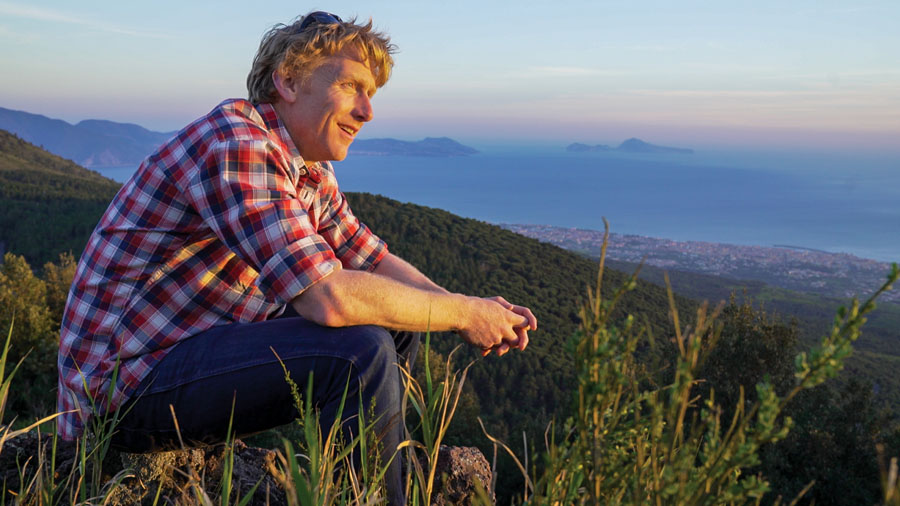
“I served as the northwest editor and primary gear reviewer for Backpacker for 11 years,” explains Lanza. “Then, in 2012, I published a book about my family’s year-long exploration of the changes taking place in the American national parks most endangered by climate change.”
[nextpage title=”Read on!”]
Titled Before They’re Gone, the book nabbed an honorable mention for the National Book Award and won the National Outdoor Book Award. Using the success as a springboard, Lanza launched a blog called The Big Outside, which is dedicated to outdoor adventures with his family.
“For years I’d made a living identifying, planning, and writing about great trips, and I think that’s what’s made The Big Outside such a uniquely authoritative source,” he says. “[The blog] offers stories, photos, and expert trip-planning advice on America’s and the world’s best outdoor adventures—including many that are great for families—with everything based on my own first-hand knowledge.”
Since its inception, the blog has appeared on numerous top lists, including USA Today’s Readers’ Choice list, The Adventure Junkies Top 25 Hiking Blogs, and Feedspot’s Top 100 Outdoor Blogs. According to Lanza, The Big Outside now provides the bulk of his income.
Breaking In
Tom Gathman, i.e. The Real Hiking Viking, thru-hiked the Pacific Crest Trail for the third time this year and is shooting a documentary with one of his closest hiking friends. While he is excited for new adventure, he is equally pumped about a Real Hiking Viking line of gear and apparel from Mountainsmith. The development could potentially provide a steady income stream and much-needed funding for an upcoming attempt to break the speed record for thru-hiking America’s Triple Crown, as well as a subsequent foot-powered circumnavigation of the northern hemisphere.
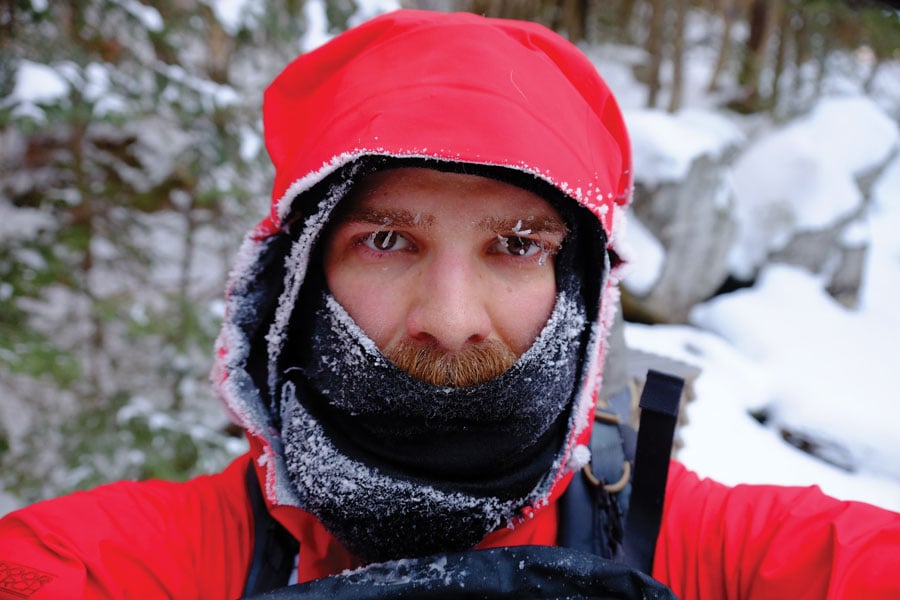
Similar to Pharr Davis and Skurka, Gathman describes going pro as a necessary move to stay on the trail. Arriving to the sport a bit later than his counterparts—the 33-year-old former Iraq combat veteran and Marine sniper completed his first long-distance thru-hike in 2012—Gathman says social media platforms are what got him into the game. Albeit accidentally.
“I was posting on Instagram and Facebook whenever I could, namely just to stay in touch with friends and family and make sure they knew I was still alive,” he says. Only then, the pages started picking up followers. “It was strange to see so many people were digging what I was doing, but I found it gave me a kind of confidence, and slowly began to make me want to do a better job of documenting things.”
After four years of living basically on-trail and around 15,000 miles of hiking, the habit led to a blog and more than a dozen sponsorships—including the impending deal with Mountain Smith. Gathman says feedback from his 41,500 Instagram and 21,804 Facebook followers helped validate what he was doing and inspire him to keep going. “When most of the world thinks what you’re doing is irresponsible and crazy, it helps to know there are people out there supporting you,” he says. “They see what you’re doing as inspiring and important, and that adds fuel to the fire to figure out how to keep going.”
Realities
It’s true that pro hikers make their living getting outdoors and doing what they love. But there’s a flipside.
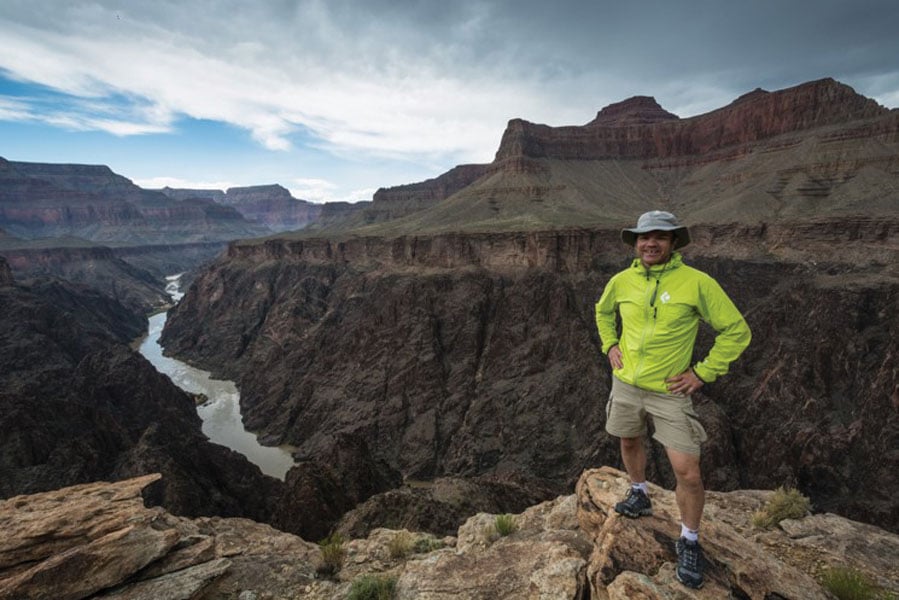
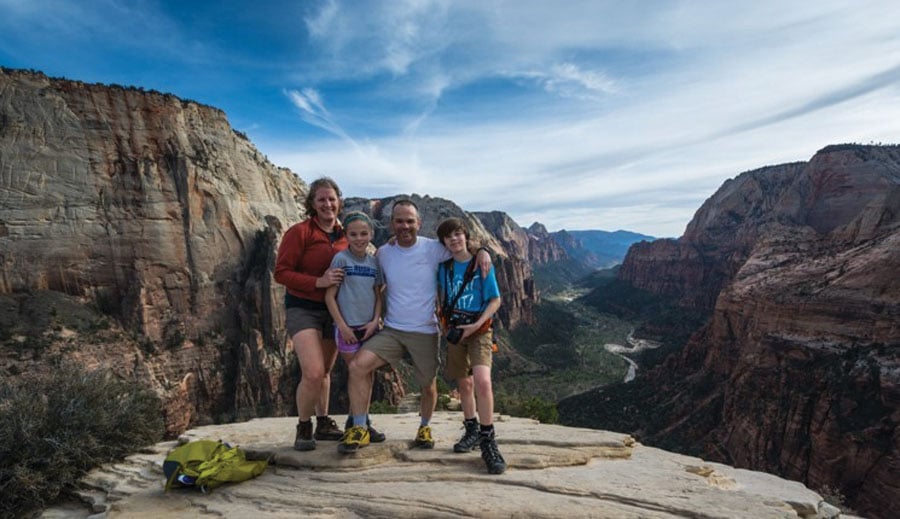
“What I love about it is being my own boss and taking on the responsibility for the success or failure of doing the stuff that I want to do, the way I want to do it,” says Alastair Humphreys, 40, whose outdoor resume includes, in addition to a four-year bicycle trip around the world, a hike across India and a foot-powered trek through the Empty Quarter, a desert on the Arabian Peninsula which, at 250,000 square miles, is the largest contiguous desert in the world. “But the problem becomes, because it’s your job, it has to pay for your life. So, when I summit a mountain and there’s this beautiful sunset, rather than enjoying the moment, it’s easy to start thinking: How am I going to turn this into content?”
Meanwhile, to afford the freedom necessary to keep going, Gathman and Skurka limit their possessions to what can fit in a car, endure long-distance romantic relationships, live out of friend’s houses or on the occasional month-to-month lease, and cite frugality as their biggest source of income. “If I lived like your typical 30-some-year-old guy, I’d never be able to afford doing what I do,” says Skurka.
However, upon the final analysis, the adventurers are all quick to say the drawbacks are outweighed by the payoff. Bigtime.
“I love my life and consider my job the best job in the world,” says Gathman. “If I wanted to make a lot of money and have nice things, I’d be a banker. But that’s not what I value, that’s not the way I want live. What I want is to be in the woods and on the trail, and I’m willing to do what it takes to make that happen.”
